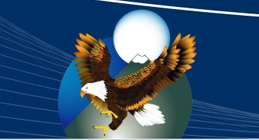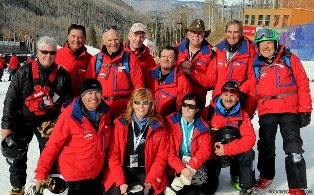Salazar cites USGS report on decreasing snowpack in Rockies, sounds 'carbon pollution' alarm
There's more bad news for water watchers in the Rocky Mountain West, where record snowpack from last winter has led to a dangerous runoff in some places, including Colorado's Western Slope. The bad news is this season is apparently a statistical blip in a 30-year historical decline in Rocky Mountain snowpack, which provide between 60 and 80 percent of the water supply for the 70 million people living in the western United States.
According to a study released late last week by the U.S. Geological Survey (USGS), steady declines in Rocky Mountain snowpack over the past three decades are highly unusual when compared to previous centuries. USGS scientists teamed up with scientists at the University of Arizona, University of Washington, University of Wyoming and the University of Western Ontario to produce a study entitled “The Unusual Nature of Recent Snowpack Declines in the North American Cordillera,” which is available online at Science Magazine.
The report relied on snowpack reconstructions produced by studying 66 tree-ring chronologies dating back from 500 to more than 1,000 years. With the exception of the mid-14th and early 15th centuries, the snowpack reconstructions revealed that the northern Rockies saw larger snowpacks when the southern Rockies saw smaller ones, and vice versa. But over the last 30 years there were simultaneous declines in both the south and the north, with unusually big declines in the north.
“Over most of the 20th century, and especially since the 1980s, the northern Rockies have borne the brunt of the snowpack losses,” said USGS scientist Gregory Pederson, the lead author of the study. “Most of the land and snow in the northern Rockies sits at lower and warmer elevations than the southern Rockies, making the snowpack more sensitive to seemingly small increases in temperature. Also, winter storm tracks were displaced to the south in the early 20th century and post-1980s. Forest fires were larger, more frequent and harder to fight, while Glacier National Park lost 125 of its 150 glaciers.”
U.S. Interior Secretary Ken Salazar, a former Colorado senator, issued this statement on the USGS report:
“This scientific work is critical to understanding how climate change is affecting western water supplies,” Salazar said. “It helps land managers adapt to changing conditions on the ground, assists water managers with planning for the future, and gives all of us a better understanding of the real impacts that carbon pollution is having on our resources and our way of life.”
The news is apparently nearly as bad in the southern Rockies. A separate report recently produced by the U.S. Bureau of Reclamation in conjunction with seven states that rely on the Colorado River Basin (including Colorado), found water supplies in the basin may decline by up to 20 percent by the middle of this century. That's produced a lot of hand wringing by water policymakers over the future of the 1922 Colorado River Compact, as chronicled today by veteran water reporter Allen Best of Mountain Town News.
![]() 0 Comments on "Salazar cites USGS report on decreasing snowpack in Rockies, sounds 'carbon pollution' alarm"
0 Comments on "Salazar cites USGS report on decreasing snowpack in Rockies, sounds 'carbon pollution' alarm"
Be the first to comment below.



 Vail Town Council to weigh new plan to redevelop T...
Vail Town Council to weigh new plan to redevelop T...  All about indexes
All about indexes  Transforming your social security into a winning r...
Transforming your social security into a winning r...  Pass sales, real estate transactions, revenues inc...
Pass sales, real estate transactions, revenues inc...  Vail Valley native with passion for Biophilic inte...
Vail Valley native with passion for Biophilic inte...  Beaver Creek starts work on new summer activities
Beaver Creek starts work on new summer activities  Land Trust, ECO Trails, Vail Resorts team up to cl...
Land Trust, ECO Trails, Vail Resorts team up to cl...  EUROVISION named Host Broadcaster for 2015 World A...
EUROVISION named Host Broadcaster for 2015 World A...  Vail Resorts brings back Lindsey Vonn's 'School of...
Vail Resorts brings back Lindsey Vonn's 'School of...  Hundreds turn out for 2015 World Championships vol...
Hundreds turn out for 2015 World Championships vol...  Eagle County Senior Health Expo and 9th Annual Hea...
Eagle County Senior Health Expo and 9th Annual Hea...  Final race of Vail Mountain Trail Running Series s...
Final race of Vail Mountain Trail Running Series s...  Before you write your will ...
Before you write your will ...  2015 World Ski Championships volunteer recruitment...
2015 World Ski Championships volunteer recruitment...  Ascent Sotheby’s International Realty in Vail an...
Ascent Sotheby’s International Realty in Vail an...  CDOT outlines road closures for local stages of US...
CDOT outlines road closures for local stages of US...  Italian artist creates unique trophies for Vail, B...
Italian artist creates unique trophies for Vail, B...  Vail Recreation District once again hosting Jake W...
Vail Recreation District once again hosting Jake W... 

